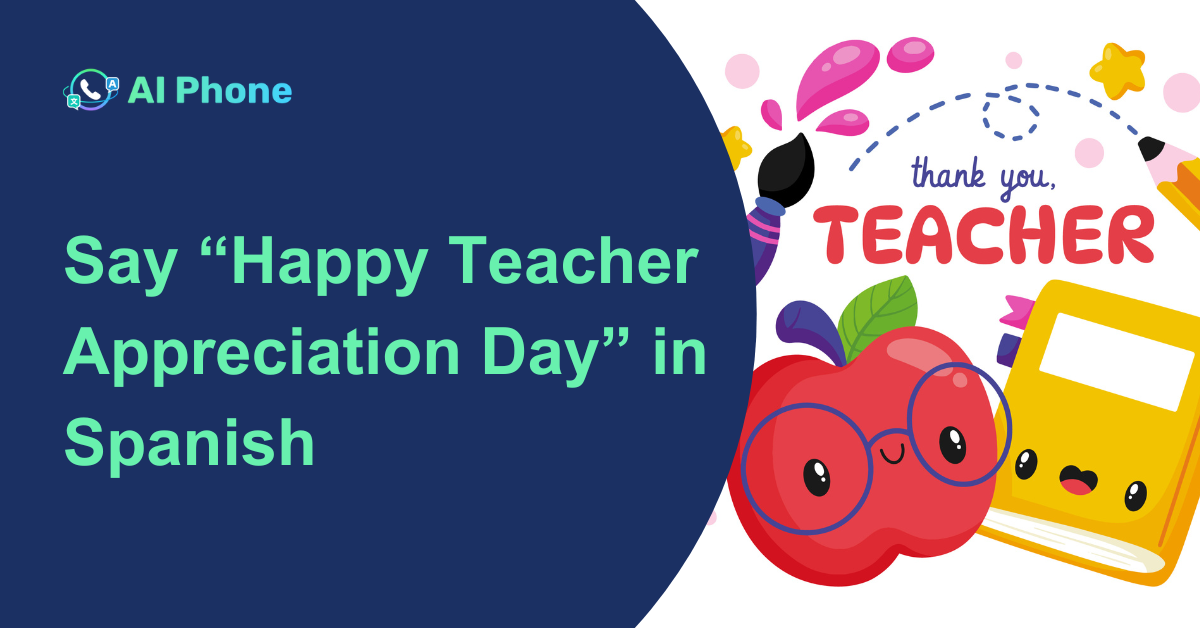How Accents Impact Communication and How Real-Time Translation Tools Can Help
In an increasingly globalized world, accents are everywhere. Whether you’re speaking with a customer from the other side of the world or a neighbor who recently moved into town, accents shape how we hear, understand, and interact with one another.
While accents reflect our identity, culture, and language history, they can also create communication barriers—especially in cross-language interactions. This blog dives into what an accent is, why it matters in real-world communication, and how tools like AI Phone help users understand each other more clearly, no matter where they’re from.
1. What Is an Accent, and Why Does It Matter?
An accent is a distinctive way of pronouncing a language, often shaped by geographic, cultural, or linguistic background. Everyone has an accent—even if they believe they speak “standard” English.
There are two major types of accents:
- Regional Accents: Variations in pronunciation within the same language (e.g., American Southern English vs. Boston English).
- Foreign Accents: The influence of a speaker’s native language on a second language (e.g., a French speaker speaking English with a French intonation).
Accents are not mistakes. But they can affect comprehension, especially in voice-based communication like phone calls or video chats.
2. Accent vs. Dialect vs. Language
Many people confuse the terms accent, dialect, and language. Here’s how they differ:
| Term | Definition | Example |
|---|---|---|
| Language | A system of communication with its own grammar and vocabulary | English, Mandarin, Arabic |
| Dialect | A variation of a language, often region-based, with its own expressions | Sicilian Italian, Cantonese |
| Accent | A way of pronouncing a language, influenced by region or native language | Irish accent in English, etc. |
While dialects may involve vocabulary and grammar differences, accents primarily affect pronunciation.
3. Common Types of Accents Around the World
Even within the same language, pronunciation can vary greatly. Let’s look at some common accent variations in English:
- North American English: Includes General American, Southern, New York, and Canadian accents.
- British English: Received Pronunciation (RP), Cockney, Scouse (Liverpool), Geordie (Newcastle).
- Other English Accents: Indian English, Nigerian English, Singaporean English, Australian English.
These regional nuances often lead to misunderstandings during phone calls or business meetings, even among native speakers.
4. How Accents Impact Cross-Language Communication
When a foreign accent is layered on top of a second language, understanding becomes even more challenging. For example:
- A Spanish speaker with a strong Andalusian accent speaking English may be difficult to understand over the phone.
- A Mandarin speaker using English might struggle with “th” sounds or intonation patterns.
In real-world situations—such as booking a medical appointment, calling immigration services, or talking to a customer about a delivery—misunderstandings caused by accents can lead to frustration or even missed opportunities.
5. The Challenge for Translation Technology: Recognizing Accents
Traditional translation tools often struggle with accent-heavy speech. Speech recognition engines are usually trained on “standard” or “neutral” speech, making them less effective with:
- Non-native pronunciation
- Heavy regional inflections
- Code-switching between languages
This is where real-time speech translation apps need to do more than just word conversion—they must understand pronunciation diversity.
6. How AI Phone Handles Over 150 Languages and Accents in Real Time
AI Phone (www.aiphone.ai) is built to meet this challenge.
The app supports over 150 languages and accents, making it one of the few translation tools designed for realistic, real-world voice conversations. Whether you’re speaking in Argentinian Spanish, Cantonese, or Punjabi-influenced English, AI Phone uses advanced speech recognition models that are trained on accent-rich datasets.
Key Features:
- Real-time two-way voice translation during calls (including WhatsApp and WeChat)
- Accent-adaptive speech recognition for accurate input
- Clear, natural-sounding output in the listener’s native language
- Conversation summaries after the call for easy review
- Voice cloning, so users can hear themselves speak another language using their own voice
7. Real-World Scenarios: Where Accent Clarity Matters
Let’s look at a few real user scenarios that highlight the importance of accent-aware translation:
Scenario 1: Medical Call from a Spanish-Speaking Immigrant
A mother in California calls her child’s pediatrician to ask about medication side effects. She speaks Spanish with a Central American accent. The doctor speaks English.
→ With AI Phone, the mother can speak freely in Spanish, and the doctor hears a fluent English translation, improving clarity and reducing anxiety.
Scenario 2: Truck Driver in Texas Coordinating With a Warehouse in Mexico
The driver speaks English with a Southern drawl. The logistics manager speaks Mexican Spanish.
→ AI Phone bridges both sides with accent-aware translation, helping both parties coordinate deliveries without delays.
Scenario 3: International Business Meeting Over WeChat
An entrepreneur in Vietnam holds a video call with a supplier in Germany. Both speak English, but with strong accents.
→ Using AI Phone’s WeChat integration, their call is translated live, minimizing misunderstandings caused by accent interference.
8. Voice Cloning: Making Translations Feel More Personal
One of AI Phone’s standout features is voice cloning—a tool that allows users to maintain their own voice across languages.
Instead of hearing a robotic or unfamiliar voice, users hear their own tone and emotion in the translated language. This is especially helpful in personal situations like:
- Talking to family abroad
- Visiting a doctor with sensitive information
- Building trust in cross-border business partnerships
9. Conclusion: Accents Are a Natural Part of Language—Not a Barrier
Accents are part of who we are, shaped by our region, our identity, and our native tongue. But in a world where global communication is constant, the tools we use must keep up with how real people actually speak.
AI Phone is designed for these realities—supporting not only multiple languages, but also the accents that come with them. Whether you’re an immigrant navigating daily life, a professional working across cultures, or simply traveling the world, AI Phone helps you speak freely and understand clearly.
Ready to Try It?
Download AI Phone now and experience accent-aware real-time voice translation across 150+ languages.

